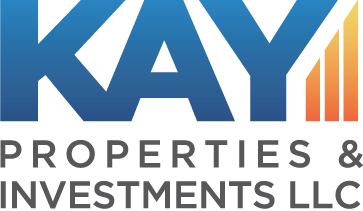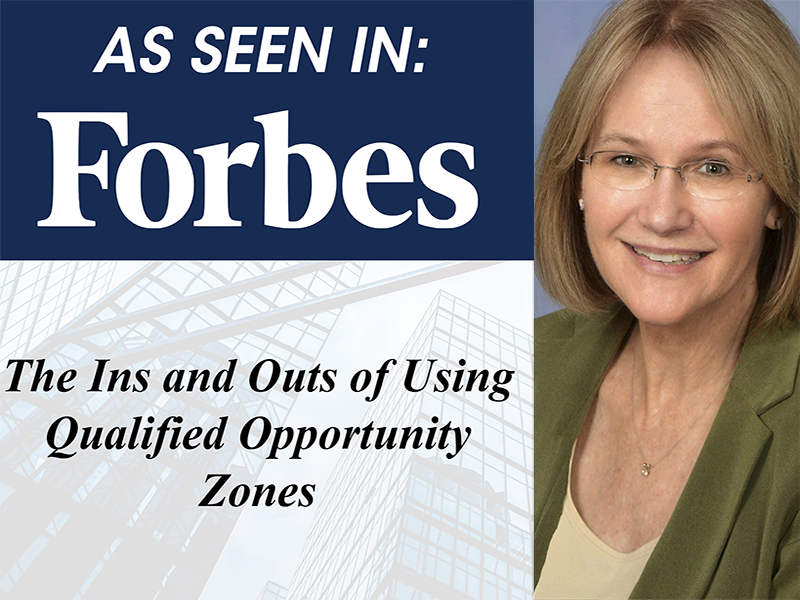By Betty Friant, CCIM, Senior Vice President, Kay Properties & Investments
It’s a great feeling when you sell some stock, a piece of real estate or the business you’ve poured your life into for a nice profit that puts a small fortune into your bank account. But then comes the tax bill to take a little bit of the bloom off that rose. It’s downright painful to hand your hard-earned money over to the government — even at the reduced capital gains rate.
The good news is, every now and then, the feds are willing to cut you a break. And there’s one tax break a surprising number of investors have never even heard of, let alone taken advantage of.
What Are Qualified Opportunity Zones?
Qualified Opportunity Zones (QOZ) are relatively new, and were created by Congress as part of the Tax Cuts and Jobs Act of 2017. The purpose of this new program was to encourage long-term investments in low-income communities across the United States. According to the United States Department of Treasury, there are more than 8,700 QOZs in the country, including in territories like Puerto Rico. The bottom line is that QOZs are a social program with the intent of redeveloping impoverished districts throughout the country by driving private capital to underserved communities and 35 million Americans by offering tax incentives to investors. These Zones are typically located on the outer edges of underdeveloped areas — outside the most blighted areas which investors will avoid no matter how many tax advantages they offer.
Doing Well by Doing Good
Qualified Opportunity Zones can provide qualified investors a unique way to reduce taxes while doing something good for those who are less fortunate. By simply rolling profits over from the selling of stocks, cryptocurrency, bonds, jewelry, art, or real estate into a Qualified Opportunity Zone, accredited investors can reap an array of tax benefits — assuming they make the investment within six months of realizing their capital gain. It’s critical to note that unlike a 1031 real estate exchange, you’re re-investing your profit only — not your basis.
Three Examples of How QOZs Work (Be Warned: one of these benefits expires soon)
Let’s take a look at the three ways you can save…
- Tax Saving Opportunity #1: Investors who invest capital gains income can defer their re-invested capital gains taxes until the end of 2026. In other words, you won’t owe the IRS a penny on that money until April 2027.
- Tax Saving Opportunity #2 (expires on December 31, 2021): Better yet, if you invest your profits before December 31, 2021, you get the added benefit of a 10% step up on the basis of your original investment — which only adds to your tax savings.
- The BIG Prize: Reduce A seven-figure tax bill down to zero Tax Saving Opportunity #3: However, those tax savings are nothing when compared to the much bigger benefit you get if you hold your investment for at least 10 years and a day. If an investor held their Qualified Opportunity Zone investment for 10 years, that taxpayer wouldn’t have to pay even a penny in taxes on the profits they made— no matter how big they are.
|
Qualified Opportunity Zone Deadlines |
|
| Within 180 Days of Asset Sale | Within 180 days of realizing the gains of a sale, the investor must reinvest those gains into a Qualified Opportunity Fund to avoid capital gains taxes. |
| Before December 31, 2026 | Until the earlier of December 31, 2026 or the date the investor pulls their interest from a Qualified Opportunity Fund, the investor can defer payment of capital gains on the reinvested gains. |
| Interest Held in a Fund for 5 – 7 Years by December 31, 2026 | If the investor holds their interest in the fund for at least 5 years, the tax paid (by December 31, 2026 or when they pull interest in the fund) is reduced by 10%; if held for 7 years, it is reduced by 15%. |
| Interest Held in a Fund for 10+ years | After being held for at least 10 years, upon the sale, there is no tax on any appreciation on reinvested gains that occur while in the Qualified Opportunity Fund. |
| December 31, 2028 | Opportunity Zone designations expire |
| December 31, 2047 | The last date to sell interest in a Qualified Opportunity Fund. |
As you can see in the chart above, the biggest takeaway of Qualified Opportunity Zone Funds is that after an investor holds their position in the investment for 10 years, there is no tax on the asset’s appreciation. That’s zero. So, if an asset appreciates 20 or 30 percent, that could translate to a significant return for the investor.
Who Might Take Advantage of this Unique Tax Savings Opportunity?
Qualified Opportunity Zone Funds are best suited for investors who have capital gains generated from the sale of an asset that may not be eligible for a traditional, like-kind 1031 exchange. So, one type of investor for a Qualified Opportunity Zone Fund could be appropriate for someone who holds shares in a stock that experienced high appreciation and now wants to sell it.
Or, another candidate who might be a good Qualified Opportunity Zone Fund investor would be someone who recently sold a business that created a potential significant long-term capital gains tax event.
The third type of investor who might be interested in a Qualified Opportunity Zone fund is a real estate investor who wants to generate some liquidity by selling their investment property. While a 1031 exchange investor is required to leave in their original principal and their gains, and even roll forward their debt, a Qualified Opportunity Zone investor is able to keep their original basis to do with as they please, and receive a tax deferral on the portion of the gains they invest in an OZ fund, resulting in instant liquidity.
The critical component for any investor is that they need to have sold the asset(s) within the prior 180 days and realized a capital gain.
Tax savings aren’t enough
As great as all this sounds, it’s important to carefully evaluate a project’s true investment potential before considering the tax benefits — especially since you’re required to keep your money locked up for at least 10 years in order to enjoy the full tax benefit. Like any real estate investment, there is no guarantee for cash flow, distributions or appreciation, and can result in the full loss of invested principal.
You see, as an investor with 20 plus years of experience in commercial real estate and investment sales who regularly advises high-net-worth investors, Kay Properties always emphasizes the importance of understanding the investment first and then the tax benefits. It’s better to look at the tax benefits as “gravy,” rather than as a reason to make an investment you otherwise wouldn’t even consider.
The good news is, plenty of development projects currently available. Plus, because many of these locations were determined to be economically challenged areas based on 2010 Census data and the Tax Cuts and Jobs Act was passed in 2017, many of these properties are now located in some of the hipster neighborhoods across the country.
How to find good Qualified Opportunity Zone projects?
Kay Properties & Investments works with a variety of carefully vetted sponsors to find the projects best suited to our clients. And we help our clients find Qualified Opportunity Zone properties that match their objectives and are appropriate for their situation.
We’re happy to introduce you to these sponsors and to help you analyze which one is the best fit for you.

